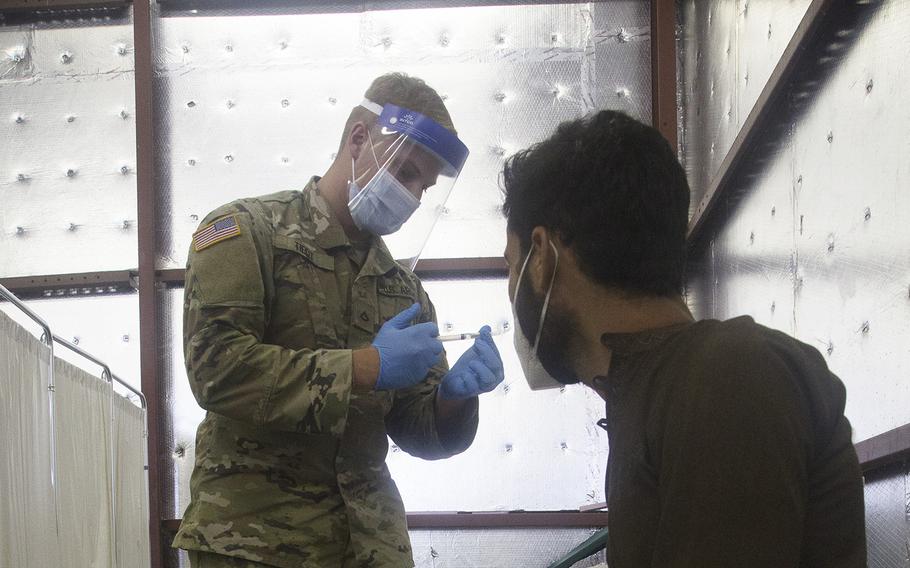
A member of the Wisconsin National Guard prepares a COVID vaccination dose for an Afghan evacuee at Fort McCoy, Wis., on Sept. 3, 2021. According to a report on Wednesday, Nov. 23, 2022, roughly 58 percent of coronavirus deaths in August were people who were vaccinated and/or boosted. (Eric Cerami/U.S. Army)
Stars and Stripes is making stories on the coronavirus pandemic available free of charge. See more stories here. Sign up for our daily coronavirus newsletter here. Please support our journalism with a subscription.
For the first time, a majority of Americans dying from the coronavirus received at least the primary series of the vaccine.
Fifty-eight percent of coronavirus deaths in August were people who were vaccinated or boosted, according to an analysis conducted for The Washington Post’s Health 202 newsletter, by Cynthia Cox, vice president at the Kaiser Family Foundation.
Being unvaccinated is still a major risk factor for dying from COVID-19. But efficacy wanes over time, and an analysis out last week from the Centers for Disease Control and Prevention highlights the need to get regular booster shots to keep one’s risk of death from the coronavirus low, especially for the elderly.
“The final message I give you from this podium is that please, for your own safety, for that of your family, get your updated COVID-19 shot as soon as you’re eligible,” he said.
It’s still true that vaccinated groups are at a lower risk of dying from a COVID-19 infection than the unvaccinated when the data is adjusted for age. An analysis released by the CDC last week underscores the protection that additional booster shots offer against severe illness and death as immunity wanes.
• People with one booster dose were even better protected. Unvaccinated people over the age of 5 had about 8 times the risk of dying from a coronavirus infection than those who received a booster shot.
• Among individuals who were eligible to receive additional booster shots, the gap is even more striking. Unvaccinated people 50 and up had 12 times the risk of dying from COVID-19 than adults the same age with two or more booster doses.
Around 35 million people have received the updated boosters that became available to people 12 and over in September and to children as young as 5 last month. That’s a little over 10 percent of the U.S. population, amid concern that cooler weather will bring a surge of COVID cases as people move indoors and respiratory infections spread.